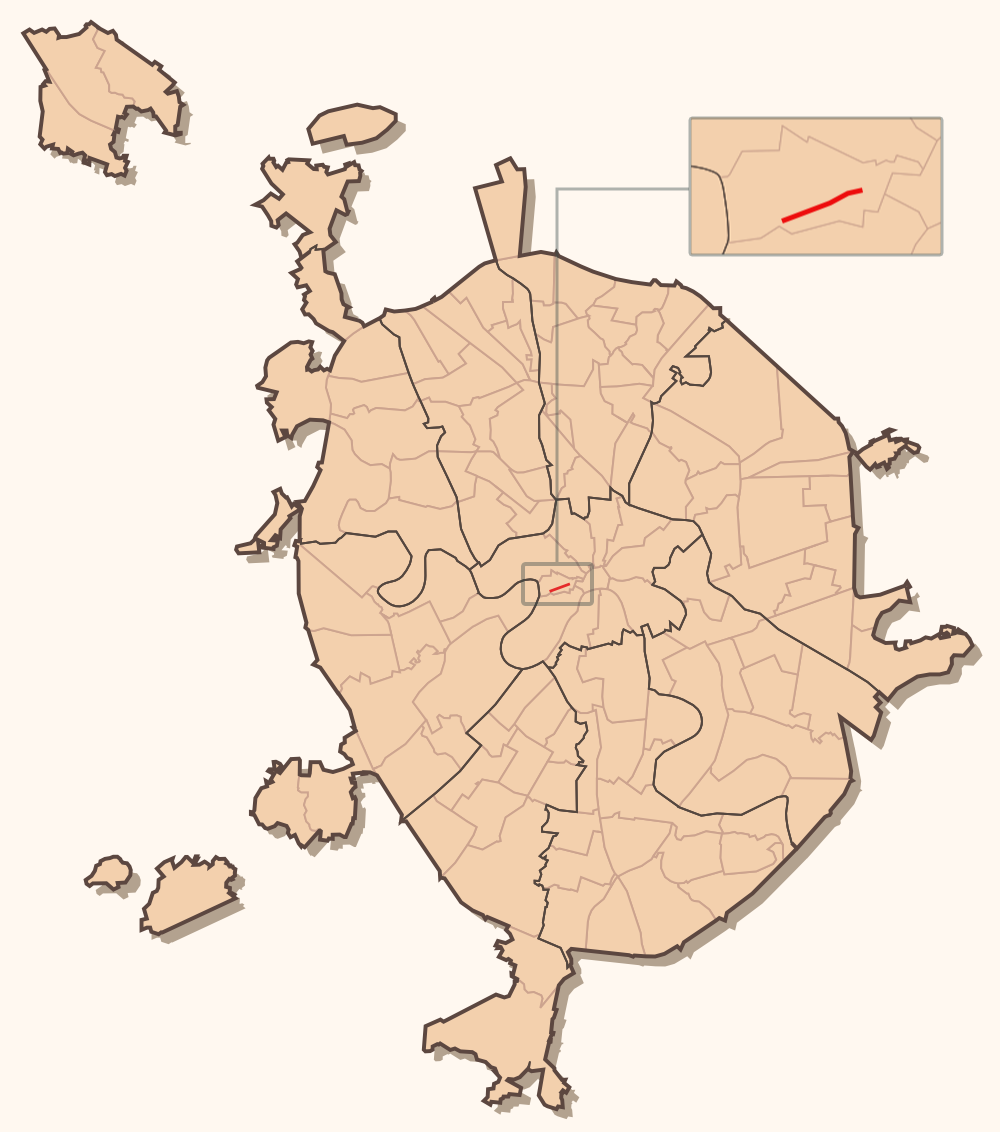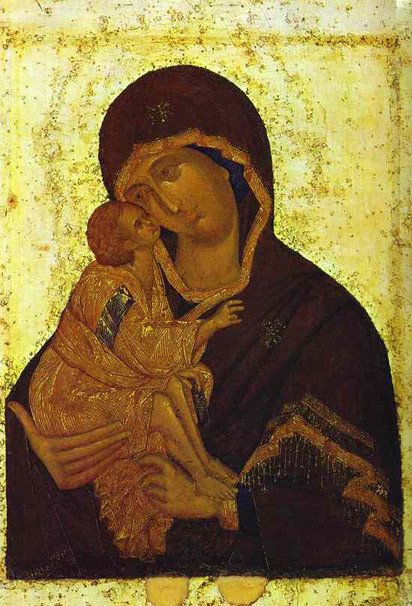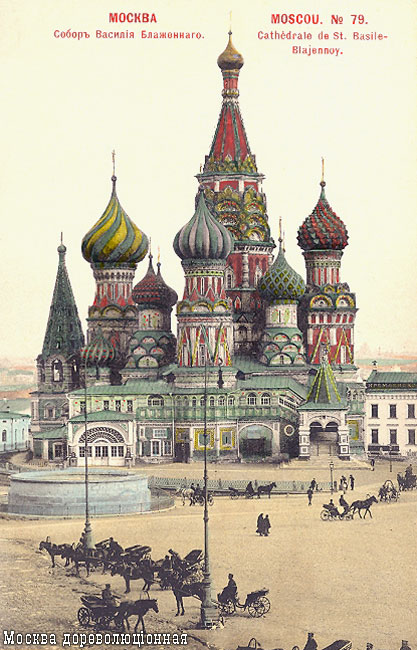|
Kazan Cathedral, Moscow
Kazan Cathedral (), formally known as the "Cathedral of Our Lady of Kazan", is a Russian Orthodox church located on the northwest corner of Red Square in Moscow, Russia. The current building is a reconstruction of the original church, which was destroyed on the orders of Joseph Stalin in 1936. The original cathedral Upon recovering Moscow from the armies of the Polish–Lithuanian Commonwealth in 1612 at the close of the Time of Troubles, Prince Dmitry Pozharsky attributed his success to the divine help of the icon '' Theotokos of Kazan'', to whom he had prayed on several occasions. From his private funds, he financed construction of a wooden church to the Virgin of Kazan on Red Square in Moscow, which was first mentioned in historical records in 1625. After the diminutive shrine was destroyed by a fire in 1632, Tsar Michael I, ordered it replaced with a brick church. The one-domed edifice, featuring several tiers of kokoshniki, a wide gallery, and a tented belfry, was consecrated ... [...More Info...] [...Related Items...] OR: [Wikipedia] [Google] [Baidu] |
Moscow
Moscow is the Capital city, capital and List of cities and towns in Russia by population, largest city of Russia, standing on the Moskva (river), Moskva River in Central Russia. It has a population estimated at over 13 million residents within the city limits, over 19.1 million residents in the urban area, and over 21.5 million residents in Moscow metropolitan area, its metropolitan area. The city covers an area of , while the urban area covers , and the metropolitan area covers over . Moscow is among the world's List of largest cities, largest cities, being the List of European cities by population within city limits, most populous city entirely in Europe, the largest List of urban areas in Europe, urban and List of metropolitan areas in Europe, metropolitan area in Europe, and the largest city by land area on the European continent. First documented in 1147, Moscow became the capital of the Grand Principality of Moscow, which led the unification of the Russian lan ... [...More Info...] [...Related Items...] OR: [Wikipedia] [Google] [Baidu] |
Avvakum
Avvakum Petrov (; 20 November 1620/1621 – 14 April 1682; also spelled Awakum) was a Russian Old Believer and protopope of the Kazan Cathedral on Red Square who led the opposition to Patriarch Nikon's reforms of the Russian Orthodox Church. His autobiography and letters to the tsar and other Old Believers such as Feodosia Morozova are considered masterpieces of 17th-century Russian literature. Life and writings He was born in , in present-day Nizhny Novgorod. Starting in 1652 Nikon, as the patriarch of the Russian Church, initiated a wide range of reforms in Russian liturgy and theology. These reforms were intended mostly to bring the Russian Church into line with the other Eastern Orthodox Churches of Eastern Europe and the Middle East. Avvakum and others strongly rejected these changes. They saw them as a corruption of the Russian Church, which they considered to be the true Church of God. The other churches were more closely related to Constantinople in their liturgies. ... [...More Info...] [...Related Items...] OR: [Wikipedia] [Google] [Baidu] |
Churches Completed In 1993
Church may refer to: Religion * Church (building), a place/building for Christian religious activities and praying * Church (congregation), a local congregation of a Christian denomination * Church service, a formalized period of Christian communal worship * Christian denomination, a Christian organization with distinct doctrine and practice * Christian Church, either the collective body of all Christian believers, or early Christianity Places United Kingdom * Church, a former electoral ward of Kensington and Chelsea London Borough Council that existed from 1964 to 2002 * Church (Liverpool ward), a Liverpool City Council ward * Church (Reading ward), a Reading Borough Council ward * Church (Sefton ward), a Metropolitan Borough of Sefton ward * Church, Lancashire, England United States * Church, Iowa, an unincorporated community * Church Lake, a lake in Minnesota * Church, Michigan, ghost town Arts, entertainment, and media * '' Church magazine'', a pastoral theology magazin ... [...More Info...] [...Related Items...] OR: [Wikipedia] [Google] [Baidu] |
Abercius Of Hieropolis
Abercius of Hieropolis (; died c. 167) was a Christian clergyman from Hierapolis at the time of Roman emperor Marcus Aurelius. He is maybe identical to an author who is called Avircius Marcellus in later sources. It is generally considered – although not indisputable – that he was bishop of Hierapolis and as such the successor to Papias. Biography Abercius is said to have evangelized across Syria and Mesopotamia, and it is on that basis that he is referred to as one of the Equals-to-the-Apostles. He was imprisoned under Marcus Aurelius, and died about 167. Abercius' feast day is celebrated on 22 October (for those churches which follow the Julian Calendar, 22 October occurs on the Gregorian Calendar date of 4 November). Works Several works are ascribed to Abercius: # ''An Epistle to the Emperor Marcus Aurelius'', of which Baronius speaks as extant, but he does not produce it # A ''Book of Discipline'' (Greek ) addressed to his clergy; this too is lost. Abercius is also ... [...More Info...] [...Related Items...] OR: [Wikipedia] [Google] [Baidu] |
Arbat Street
Arbat Street (, ), mainly referred to in English as the Arbat, is a pedestrian street about one kilometer long in the historical centre of Moscow, Russia. The Arbat has existed since at least the 15th century, which makes it one of the oldest surviving streets of the Russian capital. It forms the heart of the Arbat District of Moscow. Originally the street formed part of an important trade-route and was home to many craftsmen. In the 18th century, the Russian nobility came to regard the Arbat as the most prestigious living area in Moscow. Almost completely destroyed by the great fire of 1812 associated with Napoleon's occupation of Moscow, the street required rebuilding. In the 19th and early 20th centuries it became known as a place where petty nobility, artists, and academics lived. In the Soviet period, it housed many high-ranking government officials. , the street and its surroundings are undergoing gentrification, and it is considered a desirable place to live. Because o ... [...More Info...] [...Related Items...] OR: [Wikipedia] [Google] [Baidu] |
Saint Nicholas
Saint Nicholas of Myra (traditionally 15 March 270 – 6 December 343), also known as Nicholas of Bari, was an early Christian bishop of Greeks, Greek descent from the maritime city of Patara (Lycia), Patara in Anatolia (in modern-day Antalya Province, Turkey) during the time of the Roman Empire. Because of the many miracles attributed to his intercession, he is also known as Nicholas the Wonderworker. Saint Nicholas is the patron saint of sailors, merchants, archers, repentant thieves, children, brewers, pawnbrokers, toymakers, unmarried people, and students in various cities and countries around Europe. His reputation evolved among the pious, as was common for early Christian saints, and his legendary habit of secret gift-giving gave rise to the folklore of Santa Claus ("Saint Nick") through Sinterklaas. Little is known about the historical Saint Nicholas. The earliest accounts of his life were written centuries after his death and probably contain legendary elaborations. H ... [...More Info...] [...Related Items...] OR: [Wikipedia] [Google] [Baidu] |
Donskoy Monastery
Donskoy Monastery () is a major monastery in Moscow, founded in 1591 in commemoration of Moscow's deliverance from the threat of an invasion by the Crimean Khan Kazy-Girey. Commanding a highway to the Crimea, the monastery was intended to defend southern approaches to the Moscow Kremlin. History Muscovite period The monastery was built on the spot where Boris Godunov's mobile fortress and Sergii Radonezhsky's field church with Theophan the Greek's icon ''Our Lady of the Don'' had been located. Legend has it that Dmitry Donskoy had taken this icon with him to the Battle of Kulikovo in 1380. The Tatars left without a fight and were defeated during their retreat. Initially, the cloister was rather poor and numbered only a few monks. As of 1629, the Donskoy Monastery possessed 20 wastelands and 16 peasant households (20 peasants altogether). In 1612, it was taken for one day by the Polish-Lithuanian commander Jan Karol Chodkiewicz. In 1618, the took place b ... [...More Info...] [...Related Items...] OR: [Wikipedia] [Google] [Baidu] |
Yelokhovo Cathedral
The Epiphany Cathedral at Yelokhovo (), Moscow, is the vicarial church (building), church of the Patriarch of Moscow and all Rus', Moscow Patriarchs. The surviving building was designed and built by Yevgraph Tyurin in 1837–1845. The original church in the village of Yelokhovo near Moscow was built in 1722-31 for Tsarevna Praskovia Ivanovna. It was there that Alexander Pushkin was baptized in 1799. In 1790 a refectory with a four-tier belfry was built. The present structure was erected in 1837-1845 to a Neoclassicism, Neoclassical design by Yevgraph Tyurin. The architecture is typical for the late Empire style, with some elements of European eclectics. The riotous opulence of the interior decoration is due to a restoration undertaken in 1912. Upon closing the Moscow Kremlin, Kremlin Cathedrals (1918) and the subsequent destruction of both the Cathedral of Christ the Savior (1931) and the Dorogomilovo Cathedral (1938), the chair of Russian Orthodox Church was moved to Yelokhov ... [...More Info...] [...Related Items...] OR: [Wikipedia] [Google] [Baidu] |
Communist
Communism () is a sociopolitical, philosophical, and economic ideology within the socialist movement, whose goal is the creation of a communist society, a socioeconomic order centered on common ownership of the means of production, distribution, and exchange that allocates products in society based on need.: "One widespread distinction was that socialism socialised production only while communism socialised production and consumption." A communist society entails the absence of private property and social classes, and ultimately money and the state. Communists often seek a voluntary state of self-governance but disagree on the means to this end. This reflects a distinction between a libertarian socialist approach of communization, revolutionary spontaneity, and workers' self-management, and an authoritarian socialist, vanguardist, or party-driven approach to establish a socialist state, which is expected to wither away. Communist parties have been described as radi ... [...More Info...] [...Related Items...] OR: [Wikipedia] [Google] [Baidu] |
Communist International
The Communist International, abbreviated as Comintern and also known as the Third International, was a political international which existed from 1919 to 1943 and advocated world communism. Emerging from the collapse of the Second International during World War I, the Comintern was founded in March 1919 at a congress in Moscow convened by Vladimir Lenin and the Communist Party of the Soviet Union, Russian Communist Party (Bolsheviks) (RCP), which aimed to create a new international body committed to revolutionary socialism and the overthrow of capitalism worldwide. Initially, the Comintern operated with the expectation of imminent proletarian revolutions in Europe, particularly Germany, which were seen as crucial for the survival and success of the Russian Revolution. Its early years were characterized by attempts to foment and coordinate revolutionary uprisings and the establishment of disciplined communist parties across the globe, often demanding strict adherence to the "Twe ... [...More Info...] [...Related Items...] OR: [Wikipedia] [Google] [Baidu] |
Saint Basil's Cathedral
The Cathedral of Vasily the Blessed (), known in English as Saint Basil's Cathedral, is an Orthodox church in Red Square of Moscow, and is one of the most popular cultural symbols of Russia. The building, now a museum, is officially known as the Cathedral of the Intercession of the Most Holy Theotokos on the Moat, or Pokrovsky Cathedral. It was built from 1555 to 1561 on orders from Ivan the Terrible and commemorates the capture of Kazan and Astrakhan. It was completed, with its colours, in 1683. It was the city's tallest building until the completion of the Ivan the Great Bell Tower in 1600. The original building, known as ''Trinity Church'' and later ''Trinity Cathedral'', contained eight chapels arranged around a ninth, central chapel dedicated to the Intercession; a tenth chapel was erected in 1588 over the grave of the venerated local saint Vasily (Basil). In the 16th and 17th centuries, it was perceived as the earthly symbol of the Heavenly City. Like all churches i ... [...More Info...] [...Related Items...] OR: [Wikipedia] [Google] [Baidu] |






